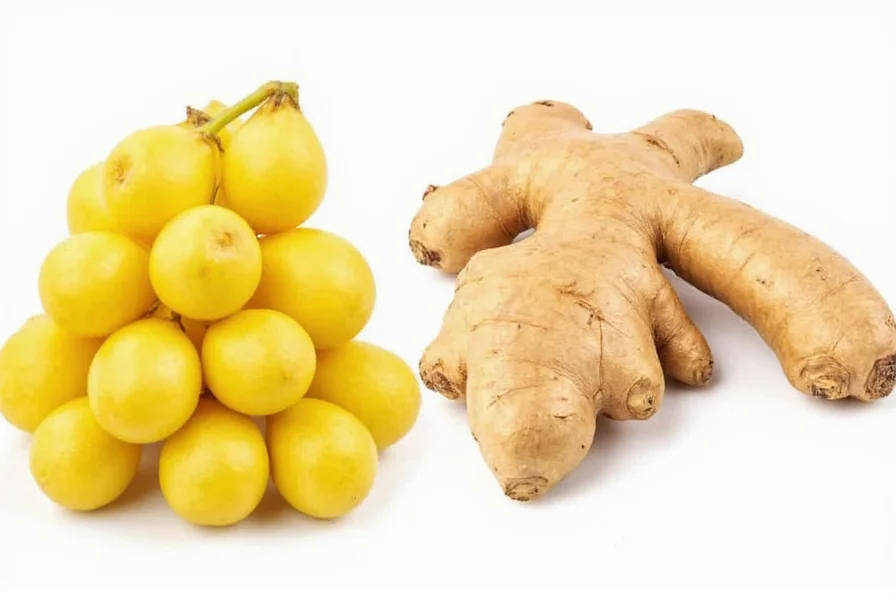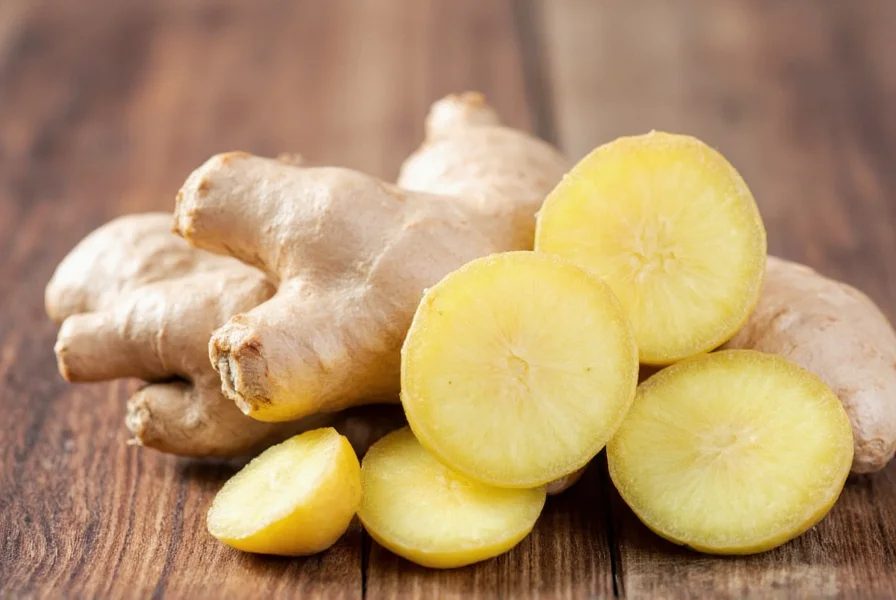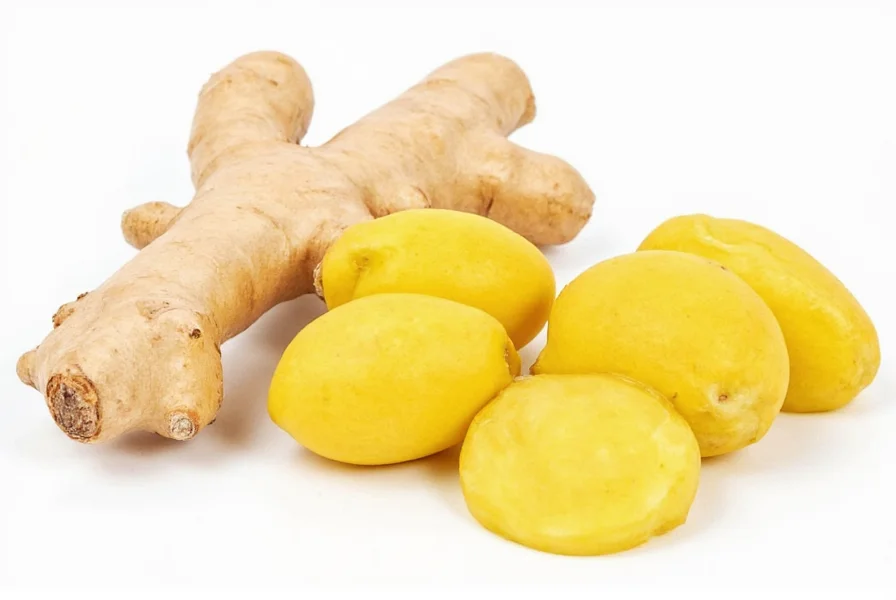Understanding the difference between galangal and ginger is essential for authentic cooking, especially in Southeast Asian cuisine where confusion can dramatically alter dish outcomes. These two rhizomes often appear similar in grocery stores, leading to common substitution errors that compromise traditional flavors.
Botanical Classification and Origins
Though both belong to the Zingiberaceae family, galangal and ginger are different genera. Ginger (Zingiber officinale) originated in Southeast Asia and spread globally, becoming a staple in cuisines worldwide. Galangal refers primarily to greater galangal (Alpinia galanga), with lesser galangal (Alpinia officinarum) being a separate but related variety.
Galangal maintains stronger cultural significance in Indonesian, Thai, and Malaysian cooking, where it's considered irreplaceable in dishes like Thai tom kha gai and Indonesian rendang. Ginger features more prominently in Indian, Chinese, and Western culinary traditions.
| Characteristic | Galangal | Ginger |
|---|---|---|
| Scientific Name | Alpinia galanga | Zingiber officinale |
| Origin | Indonesia | Southern China/India |
| Texture | Harder, woodier | Softer, more fibrous |
| Flavor Profile | Sharp, pine-like, citrusy, less spicy | Warm, spicy, pungent, more heat |
| Color (Interior) | Pale yellow to white | Bright yellow |
Physical Characteristics Comparison
Identifying galangal vs ginger visually prevents common kitchen mistakes. Galangal rhizomes appear smoother with tighter nodes and paler pinkish-tan skin. When cut open, galangal reveals a pale yellow or nearly white interior with a denser, harder texture that resists grating.
Ginger shows more knobby protrusions with thinner, smoother skin that ranges from light to dark brown. Its interior is distinctly bright yellow with a softer, more fibrous consistency that grates easily. Fresh ginger often has a stronger aroma when handled compared to galangal's subtler scent.

Flavor Profile Analysis
The galangal vs ginger taste comparison reveals why substitutions fail in traditional recipes. Galangal delivers a complex flavor: sharp with distinct pine and citrus notes, subtle earthiness, and minimal heat. This unique profile makes it indispensable in Thai tom yum soup and Indonesian sambal.
Ginger provides immediate warmth with pronounced spiciness, stronger peppery notes, and a more straightforward pungency. Its volatile oils create that familiar tingling sensation on the tongue that galangal lacks. When substituting galangal for ginger, dishes lose heat but gain complexity; substituting ginger for galangal introduces unwanted spiciness that overwhelms delicate flavors.
Culinary Applications and Substitution Guidelines
Understanding when to use galangal instead of ginger prevents culinary disasters. Traditional Thai recipes like kaeng som and laab require galangal for authentic flavor, while ginger shines in Indian curries, Chinese stir-fries, and Western baked goods.
When substitution becomes necessary:
- For galangal → ginger: Use ⅔ quantity of ginger and add a squeeze of lime to approximate galangal's citrus notes
- For ginger → galangal: Increase quantity by 25% and add a pinch of black pepper to compensate for reduced heat
Remember that frozen galangal paste maintains better flavor integrity than dried powder for Southeast Asian dishes. Fresh ginger always outperforms powdered forms in recipes requiring pronounced ginger flavor.
Nutritional and Medicinal Properties
Both rhizomes offer health benefits, but with different compound profiles. Ginger contains higher concentrations of gingerols (1.5-3%), responsible for its anti-nausea properties and anti-inflammatory effects. Galangal features galangin (a flavonoid) and lesser amounts of gingerol, giving it stronger antimicrobial properties but less digestive benefit.
Nutritionally, both provide minimal calories but differ in micronutrients. Galangal contains more iron and magnesium per serving, while ginger offers higher potassium content. Neither should replace medical treatment, but both contribute beneficial compounds to a balanced diet.

Purchasing and Storage Recommendations
Finding authentic galangal requires checking Asian grocery stores, particularly Thai or Indonesian markets. Look for firm rhizomes without soft spots or mold. Fresh galangal keeps for 2-3 weeks refrigerated in a paper bag, while ginger lasts slightly longer (3-4 weeks). Both freeze well for 6+ months when peeled and sliced.
Dried galangal powder works in some applications but lacks the complexity of fresh. Avoid confusing galangal with similar-looking false galangal (Alpinia zerumbet), which has different flavor properties. When shopping online for galangal instead of ginger, verify the botanical name to ensure authenticity.
Common Mistakes in Galangal and Ginger Usage
Cooks frequently make these errors when handling these rhizomes:
- Using equal substitution ratios without adjusting for flavor intensity differences
- Peeling galangal excessively (its skin is thinner and more edible than ginger's)
- Using dried ginger powder in place of fresh galangal in Thai soups
- Confusing galangal with lesser galangal (Chinese ginger), which has a sharper flavor
- Discarding galangal after one use (it's harder and yields more servings than ginger)
Professional chefs recommend tasting both raw (in small amounts) to understand their distinct profiles before substituting. Remember that galangal's flavor mellowing during cooking differs from ginger's heat reduction pattern.
Conclusion: Making the Right Choice
While galangal and ginger share botanical family ties, their culinary roles remain distinct. Recognizing how to tell galangal from ginger ensures authentic flavor reproduction in traditional dishes. When recipe authenticity matters, seek the specified ingredient. For experimental cooking, understand the flavor trade-offs when substituting galangal for ginger or vice versa. Both rhizomes deserve proper handling to maximize their unique contributions to global cuisine.
Frequently Asked Questions
Can I substitute galangal for ginger in baking recipes?
Yes, but with significant flavor adjustments. Galangal lacks ginger's warmth and spiciness, so you'll need to increase quantity by 25-30% and add complementary spices like cinnamon or cardamom. For gingerbread or spice cakes, this substitution creates a more citrus-forward profile that differs from traditional results.
Why does my Thai soup taste different when I use ginger instead of galangal?
Ginger introduces more heat and lacks galangal's distinctive pine-citrus notes essential to authentic Thai flavor profiles. Traditional Thai soups like tom kha rely on galangal's subtle complexity rather than ginger's pronounced spiciness. The substitution creates a fundamentally different dish that misses key aromatic components.
Is frozen galangal as good as fresh for cooking?
Frozen galangal maintains excellent flavor for most cooking applications, especially in soups and curries where texture matters less. Thaw completely before use and expect slightly softer texture, but the essential flavor compounds remain intact. For raw applications or fine grating, fresh remains superior, but frozen works well as a practical alternative when fresh isn't available.
How can I tell if I've purchased true galangal versus a substitute?
True galangal (Alpinia galanga) has smoother skin with pale pinkish tones, tight nodes, and a pale yellow-white interior. It should feel extremely hard when pressed. If your "galangal" has pronounced knobbiness, dark brown skin, or bright yellow interior, you've likely received ginger instead. Authentic galangal also has a distinctive citrus-pine aroma rather than ginger's sharper scent.











 浙公网安备
33010002000092号
浙公网安备
33010002000092号 浙B2-20120091-4
浙B2-20120091-4